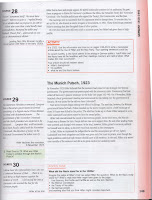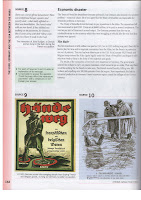Hello, History students!
Today we will continue to delve into the depths of our Germany Depth study (Ha! Get it, depths of the depth study??)
For your Do Now, we will be reviewing our vocabulary from Tues/Wed.
Please click here.
If you do not have an iPad, on a separate sheet of paper, please define republic, Reichstag, constitution, and democracy. Use each word in a sentence, too.
To understand what the Weimar Republic is, we need to know how it came to become the new government in Germany after World War One. We will look at pages 138 and 139 in our textbooks to show us diagrams and give us background information on this.
What happened to Kaiser Wilhelm II?
Who actually signed the Armistice with the Allies on November, 11, 1918?
Why did people in Germany believe that the new government, including Ebert, had "stabbed Germany in the back and caused the defeat in the war"?
Do you agree with them? Why or why not?
Who became the new President of the Weimar Republic?
We will spend time comparing and contrasting the constitution of Germany before and after World War One. The most important factors for us to understand are the differences in how representatives were chosen. Page 139 has a particularly good diagram of the new Weimar government. We will compare this with a diagram of the old government on
http://www.johndclare.net/Weimar2.htm.
What are similarities between the governments?
What differences do you notice?
What might be most difficult for people to get used to as a new Republic?
Record these similarities and differences in your Venn diagram.
Before we start looking at the problems facing the Weimar Republic, we need to learn a few more words to help us understand the ideologies of all the different enemies of the Republic. Communist, Socialist, Left-wing, and Right-wing are words we hear so frequently. But what do they really mean? What did they mean to the Weimar Republic? Let's find out!
On pages 140 and 141, we will read about the threats facing the Weimar Republic, including issues from Left-wing and Right-wing opponents. You have a graphic organizer with your Venn diagram. In each column, as we read, write down the political opponents of the Weimar Republic and how they each opposed them and how they were handled by the Republic. This will help us understand how the government treated certain political opponents and predict the consequences of that treatment.
Your homework is to write a letter from the perspective of Friedrich Ebert to a friend living in France. How might he describe the political opposition he is facing from both the Left and the Right? Include how he might handle the issues, too.
This is due Monday (P1M & P2M) or Tuesday (P2G & P4G).





















